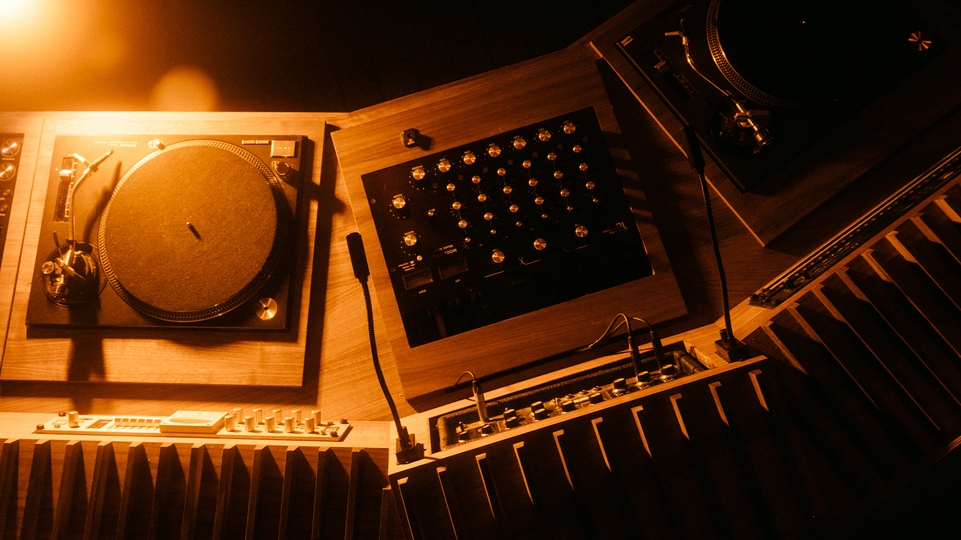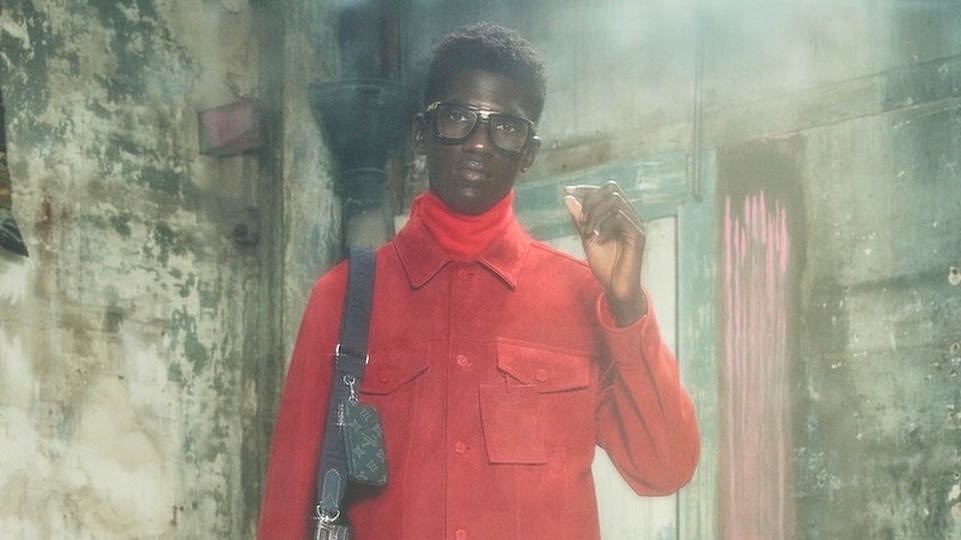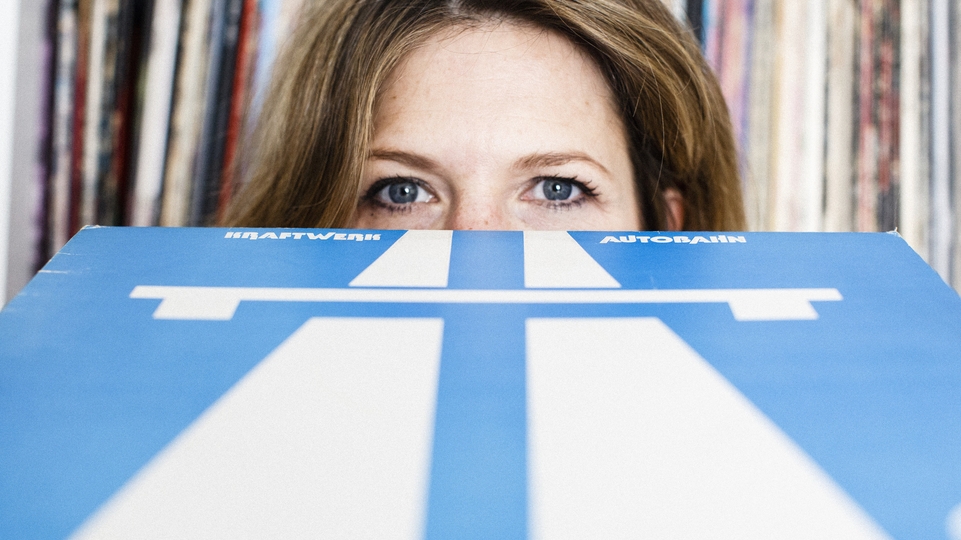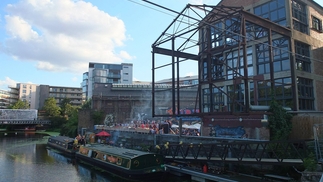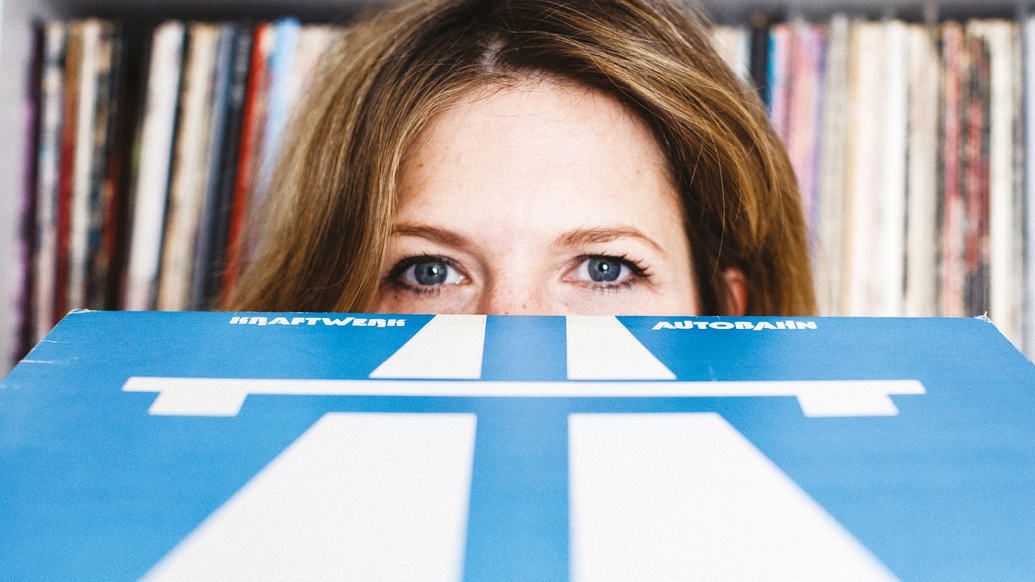
Colleen 'Cosmo' Murphy: The art of listening
Through her radio shows, DJ sets, parties and records, Colleen ‘Cosmo’ Murphy has encouraged dancers and listeners to enjoy the details and synchronicities of music. DJ Mag’s Anna Wall meets her in London to find out more about what drives her appreciation for good sound
It’s a humid summer day in London. The streets of De Beauvoir in Hackney appear quiet, but from a distance, the 1960s-built Rose Lipman Building is bustling. Today it’s the home of Lucky Cloud; a party that was launched in 2003. The concept was new to London, but the ethos was born long before, inspired by the early years of iconic New York party The Loft. Bodies are visible in the wide-open windows that run across the second floor, and the curiously faint sound of music teases passersby.
Walking up the steps to the Hall, it all begins to make sense. Although the music was barely audible from below, within the room, it becomes crystal clear. Quintessential Klipschorn speakers are placed carefully in a five-stack set-up, with a central mono speaker. The party’s soundsystem approach is to be as pure and simple as possible. Held four times a year, the former library and community centre has been transformed into something between a disco and a house party. Multi-coloured helium balloons line the high ceilings, while a solo glitterball hanging in the centre refracts the green, blue and red lights across the dancefloor and onto people’s faces. Up a few steps is a makeshift cash-only bar, and the remnants of a vegan buffet, but by 7pm, most people are found on the dancefloor.
Just before 9pm, the curtains are closed, making the space even more intimate. Commanding the music is Colleen ‘Cosmo’ Murphy. Her records are played from start to finish, a moment of silence filled by applause from the crowd, as she cues the needle for the next, piecing together a musical journey that begins at 5pm and ends at midnight. As one of the founders and a musical host since its inception, Murphy has a fundamental part to play. Records like Shirley Lites’ ‘Heat You Up (Melt You Down)’ from 1983, and others of that era, sound exceptional on the pristine system, which accentuates the warmth of the bass, the definition in the melodies and the powerful vocals.
Murphy proves that playing records without mixing is a true artform in itself; creating a story through records played in their entirety. It’s this form of musical hosting, and this feeling of togetherness and inclusivity in the crowd, that was inspired by The Loft in NYC. David Mancuso’s party began in February 1970 as a gathering for like-minded people that transcended age, race, class or sexuality; it’s helped define clubbing culture to this day, and a movement that Murphy has been a part of since the ’90s.


“Everyone that works in record shops are there not because of the pay — as it’s atrocious — but because they’re obsessed”
“I still don’t know if it was 1991 or 1992,” she laughs. We’re sat in Murphy’s home studio at her canal-side cottage. It’s wall-to-wall with vinyl, as can be expected from a lifetime collector. “I knew nothing about it at all,” says Murphy, remembering the first time she visited The Loft. “My friend just said, ‘I want to take you to a party’. This friend of mine is no longer with us sadly, he would have probably remembered the date. He was a real club guy, and ended up being the club editor for Time Out for a while. He just went out every single night, I was into a lot more live music, but when I did go out to clubs, it was with him. It was like, I would have a fun night out, I danced, I had a good time. But this one was life-changing.
“I was really into psychedelic music,” she continues. “One radio show I’d had in the ’80s was called Plastic Tales From The Marshmallow Dimension. I was really into psychedelic ’60s and ’70s rock, and into that whole movement, I was a bit of a hippie as well as an indie kid. When I walked into this place, I knew whoever’s house it was, that this person was on a very similar psychedelic trip. It was quite amazing.”
The house she’d entered was David Mancuso’s. It was his home as well as a venue for the party, situated in an old converted theatre. There’s no photographic evidence of what went down due to a strict no-photo policy. Murphy recalls her stories from memory. “So I walked in and it was very psychedelic,” she says. “It was very bizarre... there was a bed in the corner. They had these massive speakers all the way around, and they had this mirrorball and homely decorations. It was all very eclectic and not commercial. It was a private party. The soundsystem was insane. I remember at 5am in the morning, a big vegetarian spread was laid on. It started at midnight on a Saturday and ended around noon on Sunday. His apartment would be what was the projection room. It was an old theatre, and he’d levelled out the floor. He was almost like an artist. He lived and breathed it completely.”
Mancuso was a social activist and, with the principles of The Loft, much like the short-lived Sanctuary Club in 1969-73, began to form a like-minded community that was inclusive for everyone. “Those were the first two parties you went to, just to dance,” Murphy says. “So that’s a whole different way of thinking about it. David started his party also for a few reasons, modelling the rent parties in Harlem in the ’20s and ’30s, to help fund his loft at 647 Broadway. But he also had an interest in civil rights, women’s liberation and gay liberation. He was a hippie. He was into social progress, and I think this is so true, not just race, sex, gender and sexuality but also economic parity.
"So people from all walks of life would go socialise together, which was another reason why there were no photos. Because there might be famous people, and people experiencing different kinds of psychedelics and wanting that to be in a private, safe space. So he went through different venues, and by the time I went, it was on East Third Street between B and C, and I’d lived in that neighbourhood as well. I was just blown away, and started going all the time.” Eventually, Murphy and Mancuso became close friends, but her story begins long before then.
RADIO
Murphy’s foray into music started with radio, and as young as 14, she was awarded her first show. “We were really lucky growing up near Boston, because you had all the college radio,” she says. “This was the early 1980s. I was just really lucky, because I could find anything, even the regular AOR (album orientated rock) stations were still more progressive than the other ones in the middle of the country. We had great specialty shows, and there was one I listened to called Nocturnal Emissions. That’s where I’d hear Brian Eno and New Order.”
By 1982 she was broadcasting on a high school radio station. “I went through all sorts,” Murphy says. “It wasn’t necessarily dance music, although I was into electro and hip-hop, and funk. It was more that than the New York disco... you might hear things like D-Train that crossed over, that could be played on the radio in Boston. But it wasn’t like the real underground stuff. I used to go see the Gap Band, One Way, and Grandmaster Melle Mel, but then I was also seeing all these punk shows, and I was into hardcore and classic rock. I saw Prince, The Smiths, New Order, you know all the stuff in the ‘80s.”
By 16, she’d got a job working at her local record store, quickly moving positions from the till to the floor, to assistant manager, when they realised the breadth of her musical knowledge. “I learnt so much. Everyone that works in record shops are there not because of the pay — as it’s atrocious — but because they’re obsessed. Everyone would have their niche. There was one guy who was into that paisley pop ’60s psychedelia, one was a DJ and playing hip-hop and funk, another that was into all kinds of pop like Stiff Records, Elvis Costello and Nick Lowe, another that turned me onto jazz.”
She moved to New York in 1986, the week that she turned 18. It was here that she became somewhat indispensable, a prominent part of the scene through two radio shows on WNYU — Soul School and Club 89 — and a job working at Dance Tracks Records alongside Joe Claussell. “Soul School was very much priority; garage classics, Loft classics, underground dance classics. There was Tony Humphries, and John Robinson who had a mix, but it wasn’t like they were going as deep. I would be playing ‘E2-E4’ on there, or ‘Macho City’ by Steve Miller Band. Then I became a resident on another show that was a mainstay called Club 89, which was all new dance music.”
Working at Dance Tracks provided the perfect source for new wax to spin from NY labels and imports, plus she’d regularly be handed the latest TPs. “It was all about test pressings then, because there were no digital files. Everyone was playing vinyl.” It was also a focal point for the local dance music community. Regular customers included Lil Louis, François K, Danny Krivit, Romanthony, many of them becoming guests on Murphy’s show, and more becoming friends.
“Well I guess I kind of knew them all because they used to come into Dance Tracks,” Murphy says. “But I still looked up to a lot of them. I would strike up friendships with people. Louie Vega was probably the one I didn’t know the most and I had him [on my radio show]. He brought up an entire soundsystem, and went into the live room and set up. I mean, there’s no money — this is non-commercial radio. That’s what he did. I couldn’t believe it. It was really beautiful, such a nice thing to do, I felt so honoured that he did that, and he said he felt honoured. So that was incredible.”
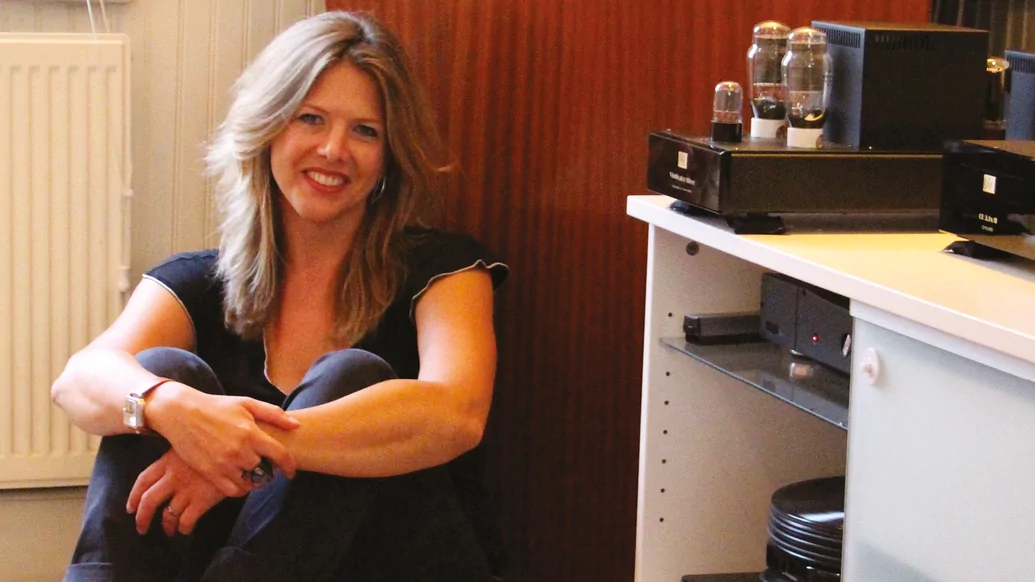

Her radio shows — some of the few that were playing underground house music on air at the time — gained an impressively broad listenership. “You had listeners that couldn’t go to clubs anymore because they’d grown up and moved to the suburbs and had kids; some were in prison,” she says. “I had blind listeners. So it was really egalitarian, which is something I’ve always been into, my own hippie spirit also influenced by my friend David. The radio is equal.”
Colleen was fully aligned with the records that were becoming significant at the time, plenty of them now considered to be classics. “One is Code 718 ‘Equinox’, it’s a Danny Tenaglia production with Peter Daou doing the keys, it samples ‘E2-E4’, and it just reminds me of The Loft. I can cry thinking about it. There are other ones, like Jaydee ‘Plastic Dreams’. I heard Timmy Regisford from The Shelter play it twice. I remember calling all the record shops the next day, finding the last copy on R&S. I still have it.”
AFFINITY
A regular attendee at The Loft, it was when Murphy met Mancuso outside of the party to discuss being a guest on her radio show that they quickly struck up an affinity. “The two of us went out to a bar on Avenue A, and we started talking about the synchronicities of music,” Murphy says. “Synchronicities are something I believe in on so many levels in life. But definitely with music and so many other things. Like the spirituality of music, really. I was explaining to him how sometimes on the radio, I’ll have a song cued up and someone will call in requesting that song. That happens all the time. Or I’d be on the dancefloor at The Loft and think I know a song that’ll go really well next, and he would just play it.
“Things like that, when you’re just on the same trip. So he agreed to do the radio show but he never spoke, all he did was just select records.” It was the beginning of a close friendship; Murphy was one of the very few that were given the opportunity to be a host at The Loft, aside from Mancuso himself. She encouraged him to compile The Loft series, a two-part compilation that she took to Nuphonic, a label based in the UK that jumped at the chance to sign. Murphy had played an imperative part in exposing his story to the world.
The moment that the first disc hit the shelves, 1999, was also the year that Murphy moved to London. “Giuliani was Mayor, places were closing, and I’d kind of felt like I’d done what I needed to do,” she admits. “It was a very spur of the moment decision, I didn’t really think about it. I was asked and I was like, ‘Yeah sure!’ Then I was like, ‘What am I doing?’ Everything is in motion. But I’m glad I did. I’ve always had a relationship with the UK. My grandmother was English. I had relatives here, my dad had lived here for a year when he was young. But also musically. I mean, I grew up listening to The Smiths, New Order and Joy Division and all these British bands. I was kind of an Anglophile in a sense. Manchester and London are really connected to New York.”


It was seemingly the end of an era the year she left; gentrification was happening in the East Village, and it became progressively harder to find a big enough space for Mancuso to rent in the area. But The Loft continued to live on. Lucky Cloud being its London counterpart, the ethos they created is all about the soundsystem and the community, and both parties have inspired a whole new generation of audiophiles and ideas — Murphy’s own Classic Album Sundays being one of them. Much like a book club, it began at her home, inviting friends to come and listen to albums in their entirety, explaining the story of the album and the artist beforehand.
“It was educational and also experiential, and emotional,” she says. “People turn their phones off, it’s on this amazing hi-fi, people hear details they’ve never heard before. And it’s like 45 minutes of a sonic oasis, and they’re transformed, because you know people don’t listen to music like that anymore. Very rarely.” As well as the concept being broadcast on Gilles Peterson’s Worldwide FM, Classic Album Sundays is a worldwide phenomenon, throwing regular listening parties in over 20 different cities, collaborating with many of the artists themselves.
HAPPY MEDIUM
Having toured the world relentlessly in the ’90s with her DJing career, Murphy has found a happy medium — nowadays choosing to play like-minded parties and boutique festivals that fit her musical explorations without compromise, and she has a busy summer ahead. She’s returning to Craig Richards’ Houghton Festival, much to the joy of the festival-goers after a highly applauded nine-hour set during the inaugural year. She’s taking her new Love Dancing soundsystem to the brand new We Out Here festival, and playing Dekmantel Selectors in Croatia, and Lost Village in the UK.
Returning to Giant Steps is looking likely, after a sell-out ‘Cosmodelica’ party back in May. Much like Mancuso did, it’s fair to say that Murphy lives and breathes it. Part of the Lucky Cloud soundsystem even takes pride of place in her living room. We select an album from the thousands of records in her collection, Jeff Buckley’s ‘Grace’, which DJ Mag finds out was co-written by a friend of hers. She cues up ‘Last Goodbye’ on her Nottingham Analogue belt-drive turntable, the poignant and emotive love song that ends our interview. Even her cartridges — handmade in Japan by Koetsu — are perhaps the most highly coveted in the world, renowned for their pristine attention to the groove’s intimate detail.
One thing that is clear — in fact, as crystal clear as Buckley’s voice through the Klipschorn speakers — is that through her various modalities, Murphy is educating a whole new generation of music lovers, and has helped redefine the art of listening.

